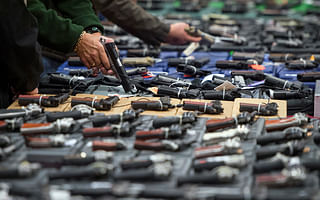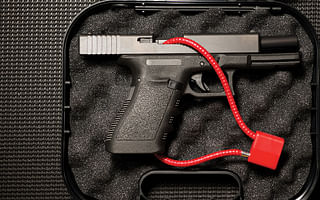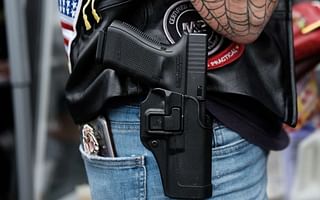Johnathan 'Buck' Rogers is a retired law enforcement officer with over 30 years of experience in the field. He has worked in various capacities, including as a patrol officer, detective, and SWAT team member. Buck has a deep understanding of gun laws and is passionate about educating the public on this important topic. He has a Bachelor's degree in Criminal Justice from the University of Nevada, Las Vegas.
As an expert on gun laws, I understand the importance of staying informed about the ever-evolving landscape of gun control in the United States. The question of whether gun control laws have become more or less stringent is a complex one, as it involves examining the historical context and comparing the regulations in place today with those of the past.
To fully understand the current state of gun control laws, it's crucial to delve into the history of gun legislation in the United States. The first major federal gun control law was the National Firearms Act (NFA) of 1934. This act aimed to regulate certain types of firearms, such as machine guns and short-barreled shotguns, by imposing strict registration requirements and taxation. The NFA was followed by the Gun Control Act (GCA) of 1968, which prohibited certain individuals, such as convicted felons, from purchasing firearms and established a licensing system for gun dealers.
Major Federal Gun Control Laws in the United States
| Law | Year | Main Purpose | Key Provisions |
|---|---|---|---|
| National Firearms Act (NFA) | 1934 | Regulate certain types of firearms | Imposed strict registration requirements and taxation on machine guns and short-barreled shotguns 🔫 |
| Federal Firearms Act | 1938 | Regulate firearms dealers | Required federal firearms license for gun dealers and imposed record-keeping requirements 📝 |
| Gun Control Act (GCA) | 1968 | Prohibit certain individuals from purchasing firearms | Prohibited convicted felons, mentally ill, and other specific categories of individuals from purchasing firearms. Established a licensing system for gun dealers 🚫 |
| Firearm Owners Protection Act | 1986 | Protect the rights of gun owners | Limited the ATF's inspection powers, prohibited the creation of a national firearms database, and allowed licensed dealers to sell firearms at gun shows 🛡️ |
| Brady Handgun Violence Prevention Act | 1993 | Implement background checks | Mandated federal background checks on firearm purchasers in the United States, and imposed a five-day waiting period on purchases 🕵️♂️ |
| Federal Assault Weapons Ban | 1994 | Ban semi-automatic firearms and large-capacity magazines | Banned the manufacture and sale of certain semi-automatic firearms and magazines that could hold more than ten rounds. Expired in 2004 🚫 |
Over the years, there have been several significant changes to gun control laws at both the federal and state levels. In 1994, the Federal Assault Weapons Ban (AWB) was enacted, which prohibited the manufacture and sale of certain semi-automatic firearms and high-capacity magazines. However, the AWB expired in 2004 and was not renewed.
In recent years, there has been a growing debate surrounding gun control, fueled by tragic mass shootings and increased public awareness. While some states have enacted stricter gun control measures, others have taken steps to loosen restrictions. This has resulted in a patchwork of gun laws across the country, with varying degrees of stringency.
To determine whether gun control laws are more or less stringent now than before, it's essential to consider both the federal and state levels of regulation. At the federal level, there have been calls for stricter background checks, closing loopholes, and banning certain types of firearms. However, significant changes to federal gun control laws have been challenging to achieve due to political divisions and the influence of interest groups.
On the state level, there is considerable variation in gun control laws. Some states have implemented measures such as red flag laws, which allow for the temporary removal of firearms from individuals deemed to be a risk to themselves or others. Others have expanded concealed carry rights or enacted constitutional carry laws, which allow individuals to carry firearms without a permit.
In summary, the question of whether US gun control laws are more or less stringent now than before does not have a simple answer. While there have been efforts to strengthen gun control at the federal level, the overall stringency of gun laws varies from state to state. It is important for individuals to familiarize themselves with the specific laws in their state and stay informed about any changes or proposed legislation. Remember, responsible gun ownership includes understanding and complying with the laws that govern firearms in your area.















